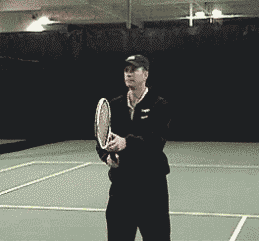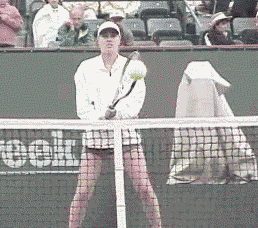|
TennisOne QuickTips
By Bill Patton
Many of my students have a difficult time sticking the forehand volley and finishing a point off at the net. They have mastered the continental grip and the proper footwork but still the ball seems to float off the racquet without real control of depth or placement. Even high balls, which should be relatively easy volleys, are rarely struck solidly. The solution is to apply a bit of backspin to the ball as you make contact. By adding backspin you can:
The problem is, however, in order to generate backspin, too often I see players over swinging or chopping down on the ball with an exaggerated motion. This will almost always result in a loss of control.
The Doorknob Technique Once you have mastered the fundamentals of volleying (proper grip and footwork) then you are ready to learn the art of the locked doorknob volleying technique. The technique is relatively simple. So, let me ask you a question, have you ever reached for a doorknob and tried to open it only to find it locked? Now imagine how much wrist you were able to use on that doorknob while trying to open it. The answer is, very little. Try it yourself on any locked door to get a feel for it because that is exactly the right amount of wrist you want to use when sticking the volley. Visualizing the locked doorknob technique will keep you from over rotating your forearm. Swinging less and imparting this minimal forearm rotation will allow you to get more control, depth, and pace on the ball. So, for crisper, cleaner volleys, swing less with the arms, step in with the legs and use the locked doorknob technique. Take it on the Court Go to a doorknob and get the feel then practice the doorknob technique with the racquet in your hand but with out the ball. See if you can emulate that feeling. Next get on the court and try some using a ball machine or have your pro or hitting partner feed you some balls. Pay attention to how your volleys bounce. If the bounce is high and the ball isn't biting, you need additional spin. Go back to the doorknob, reacquaint yourself with the feeling, and start the process all over again. Before long, you'll be cracking volleys just like Martina Hingis. |


